A Summer of Discovery
Ava Casalino ’24 and Ezra Potts ’25 examined tiny fragments of plants and sediment taken from a nearby bog to track climate change in the region over the last 14,000 years. Alexa Barcenas-Meade ’25 and Liam Hilton ’25 studied the properties of gas clouds hundreds of trillions of miles wide that surround galaxies. Brynn Conrad ’24, Autumn Cullinan ’25, and Sharon Luong ’26 analyzed material in the human body that may ultimately help scientists find a cure for long COVID.
These students and more than 80 others were enrolled in Vassar’s Undergraduate Research Summer Institute (URSI), a 10-week immersive program that enabled them to engage in cutting-edge research under the supervision of 33 faculty members in nine science departments. Since the program’s founding in 1986, hundreds of URSI students have presented their research at regional and national symposia and have published their work in a variety of top-tier scientific journals. This year’s URSI students will present the results of their research at the annual URSI Symposium in September.
“URSI can be a life-changing experience for an undergraduate thinking about a future in a STEM field,” said Professor and Chair of Mathematics Benjamin Lotto, coordinator of this year’s URSI program. “In addition to the research projects, URSI fosters a community where the students are afforded opportunities to hear about each other’s research, participate in workshops to enhance their skills, and share meals in company with one another. In my 35 years working in higher education, I’ve never seen anything else quite like it.”
Following are brief reports on three URSI projects.
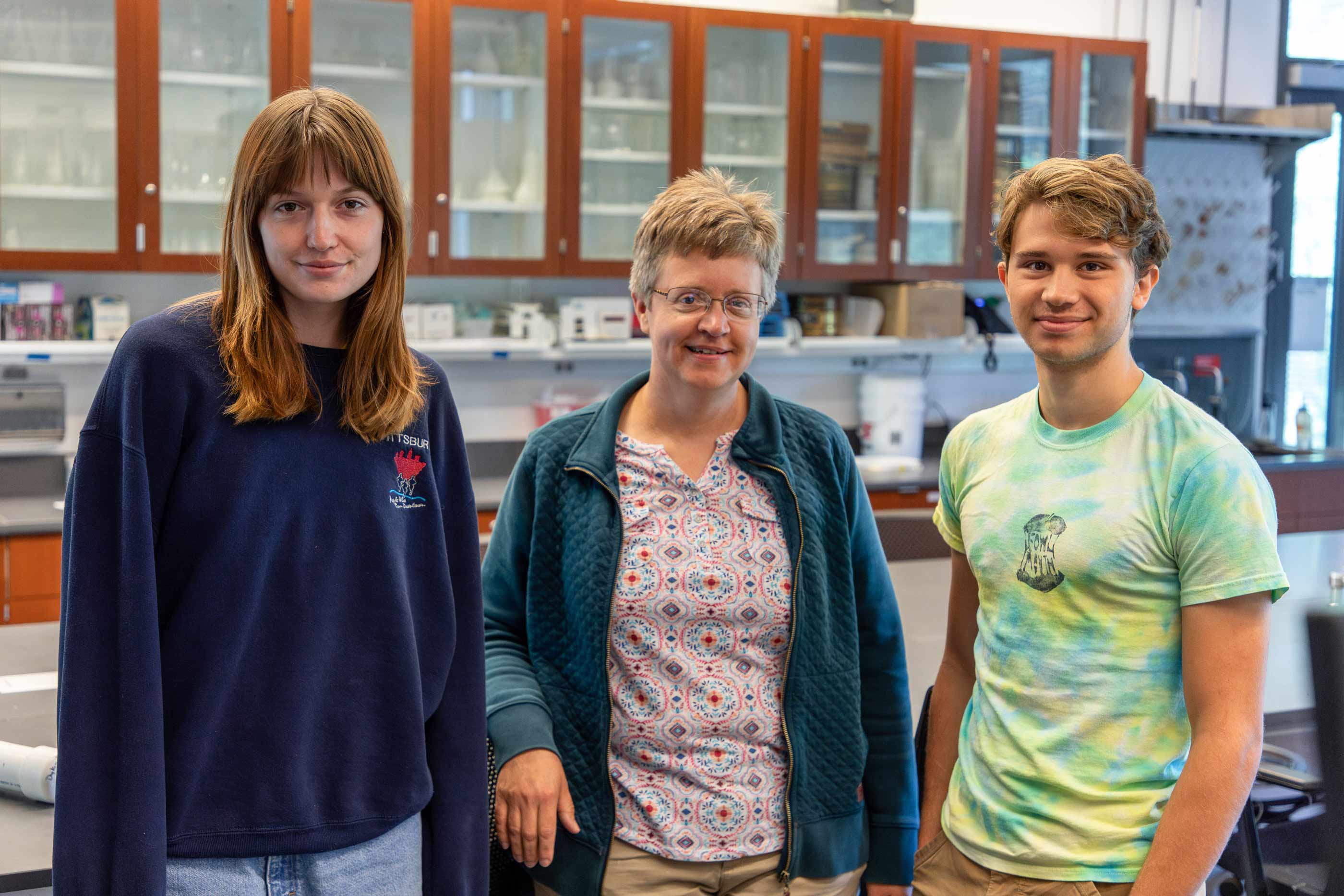
14,000 years of climate history derived from bog samples with Professor of Earth Science and Director of Environmental Studies Kirsten Menking
Casalino and Potts analyzed material taken from a core sample of the Zipfeldburg Bog located in nearby Rhinebeck, NY. Their research revealed that the material at the bottom of the core contained pollen and needle fragments from conifers like fir and spruce, indicating these trees had lived during cold conditions as an ice sheet was retreating from the region.

Menking said she enjoyed watching her students make some interesting discoveries. “At first, as they looked through their microscopes, they often had no idea what they were looking at,” she said. “Now they can readily identify many species, although we’re still finding things we can’t identify.”
Menking said scientists know that the region has gradually become warmer over the last 14,00 years, “but it wasn’t a straight line. We know there was a time when the ice advanced again, and we have found evidence in other nearby records of a 1,000-year drought around 5,000 years ago when we found charcoal fragments from forest fires.”
Casalino, an environmental science major from Portland, OR, said her URSI experience had yielded many discoveries. “One of the coolest moments for me,” she said, “was when I found fragments of algae, indicating the area had been a lake.”
Casalino said taking part in the project had enabled her to study science in a new way: “I now have a niche of scientific knowledge and procedures I didn’t have before. As I look back on the summer, I realize the progress I made from knowing nothing about this subject to knowing something while realizing there’s still much more I can learn.”
Potts, an earth science major from Beulah, CO, said the study of the sediments taken from the bog indicated that the lake had previously been part of a body of moving water that came from a river supplied by glacial melt. The later presence of water lily pollen and shallow aquatic plant fossils early in the record gave way to peat moss that indicated the lake had fully transitioned into a bog.
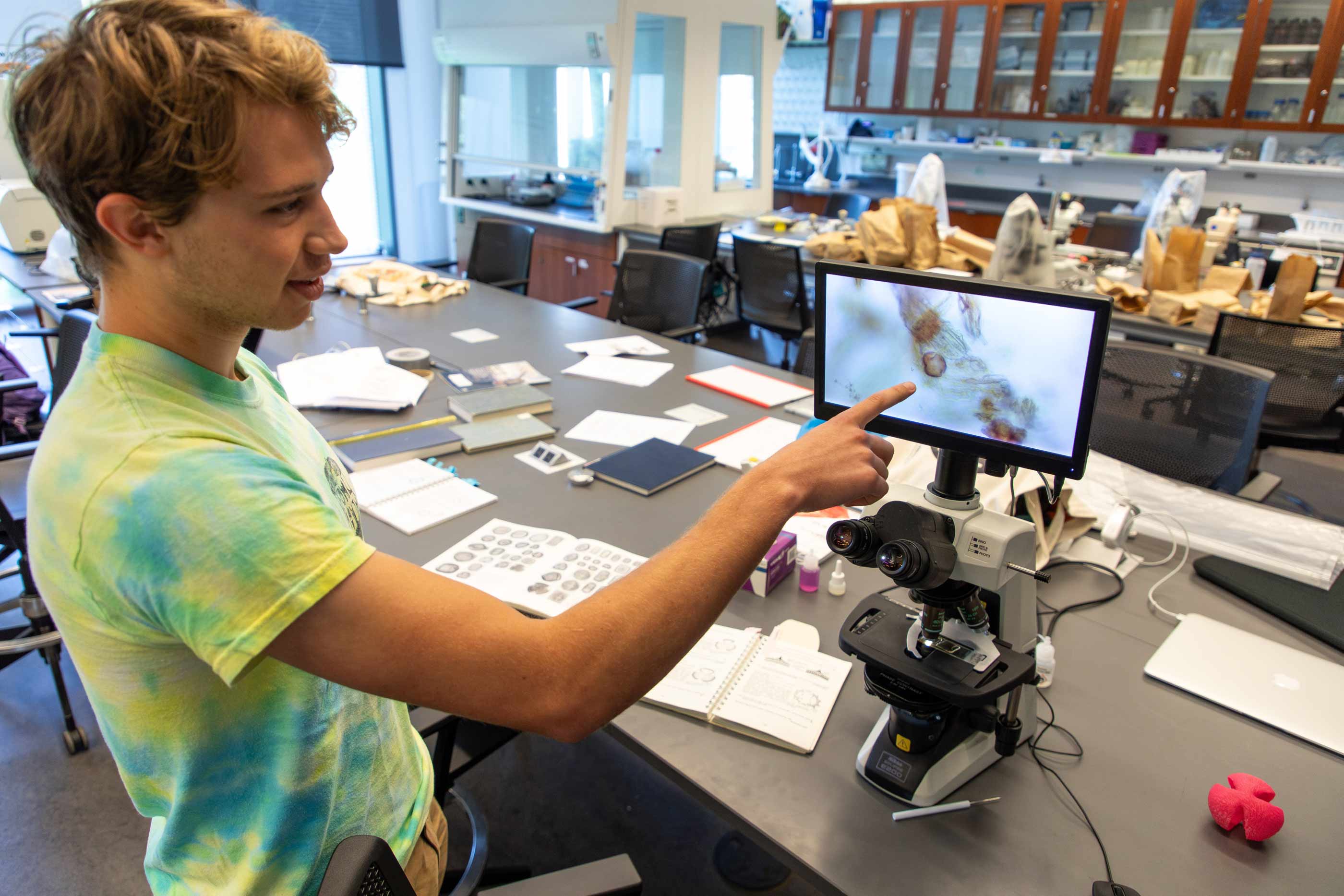
He said he had some rudimentary knowledge of how to analyze pollen samples before he enrolled in URSI but learned a lot more during the project. “Counting pollen all day may seem boring, but it’s fun because of all the discoveries it leads to,” he said.
Potts and Casalino will present their findings at the annual meeting of the Geological Society of America in Pittsburgh, PA in October.
The Circumgalactic Medium (CGM): Hot gases that surround galaxies and become star-forming material with Assistant Professor of Astronomy Ed Buie II
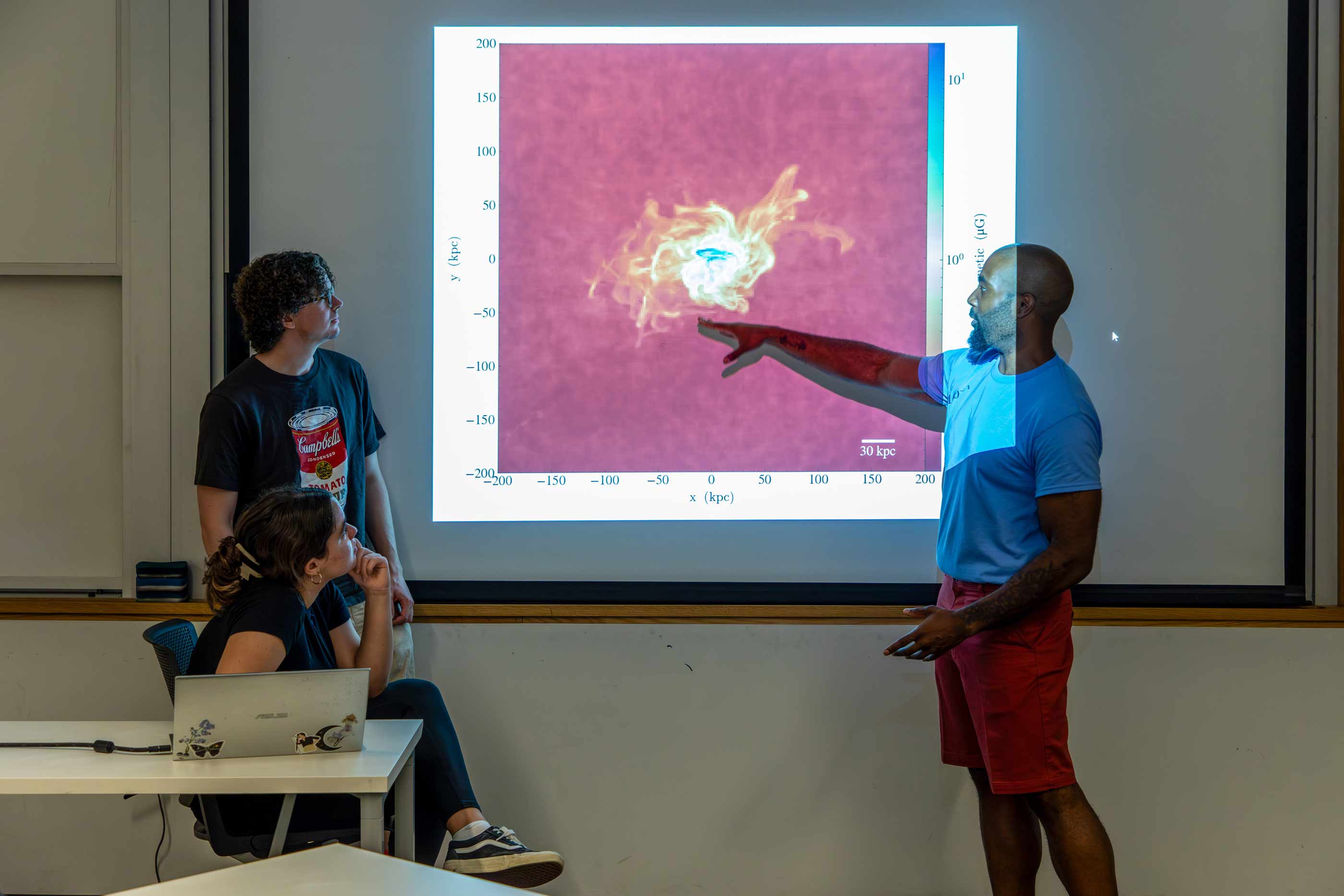
Barcenas-Meade, an astronomy major from San Miguel Allende, Mexico, and Hilton, a physics and astronomy major from Cambridge, MA, analyzed the ionized gases of a simulated circumgalactic medium.
Barcenas-Meade said she and Hilton were able to determine the effects of magnetic fields in the CGM, “allowing us to study new data and compare simulations to observational studies. This provided us with new information about the evolution of galaxies to bring us closer to understanding how our current world works today.”
Hilton said the research project required writing code using Python to plot data on the simulated CGM. “I had done some of this in an astronomy course I took last year,” he said, “but what I did this summer was much more in-depth. As the hot gases cool, they become stars and planets, and our job was to plot how the gases cool and how magnetic fields influence the dynamics of the cooling gas.”
Buie said he was excited to watch his URSI students conduct such sophisticated research. “Not that long ago, I was in grad school learning what they learned this summer,” he said. “When I get a result in my own research, I’m always happy about it, but when these two students get results, I get even more joy watching them succeed.”
Analyzing metabolites in chronic-fatigue patients and long COVID with Associate Professor of Biology David Esteban

Esteban said this project builds on recent discoveries that microbes in humans’ gut lining produce material called tryptophan metabolites that can help reveal the nature of autoimmune diseases such as myalgic encephalomyelitis, commonly called chronic fatigue syndrome (ME/CFS). He said scientists have discovered some similarities in the variety of microbes found in humans with ME/CFS and those with long COVID.

The students enrolled in this summer’s URSI project compared the kinds of bacteria found in the gut lining of patients with chronic fatigue syndrome to those of healthy patients. Conrad said the research she and Cullinan and Luong conducted this summer confirmed there’s a difference between the microbiomes of ME/CFS patients and healthy patients. “ME/CFS patients have less variety of bacteria in their gut with an unbalanced distribution of the present species,” she said.
Cullinan said her task for the project was to extract DNA information from human cells treated under many different conditions to determine optimal conditions for the experiment. Then she looked at the expression of a certain gene to determine the difference between the kinds of metabolites in healthy patients and in people with ME/CFS. She said she appreciated the opportunity to spend an extended period of time on a single research project. “Having eight weeks to conduct my research enabled me to pursue a project that was specific to my interests,” Cullinan said.
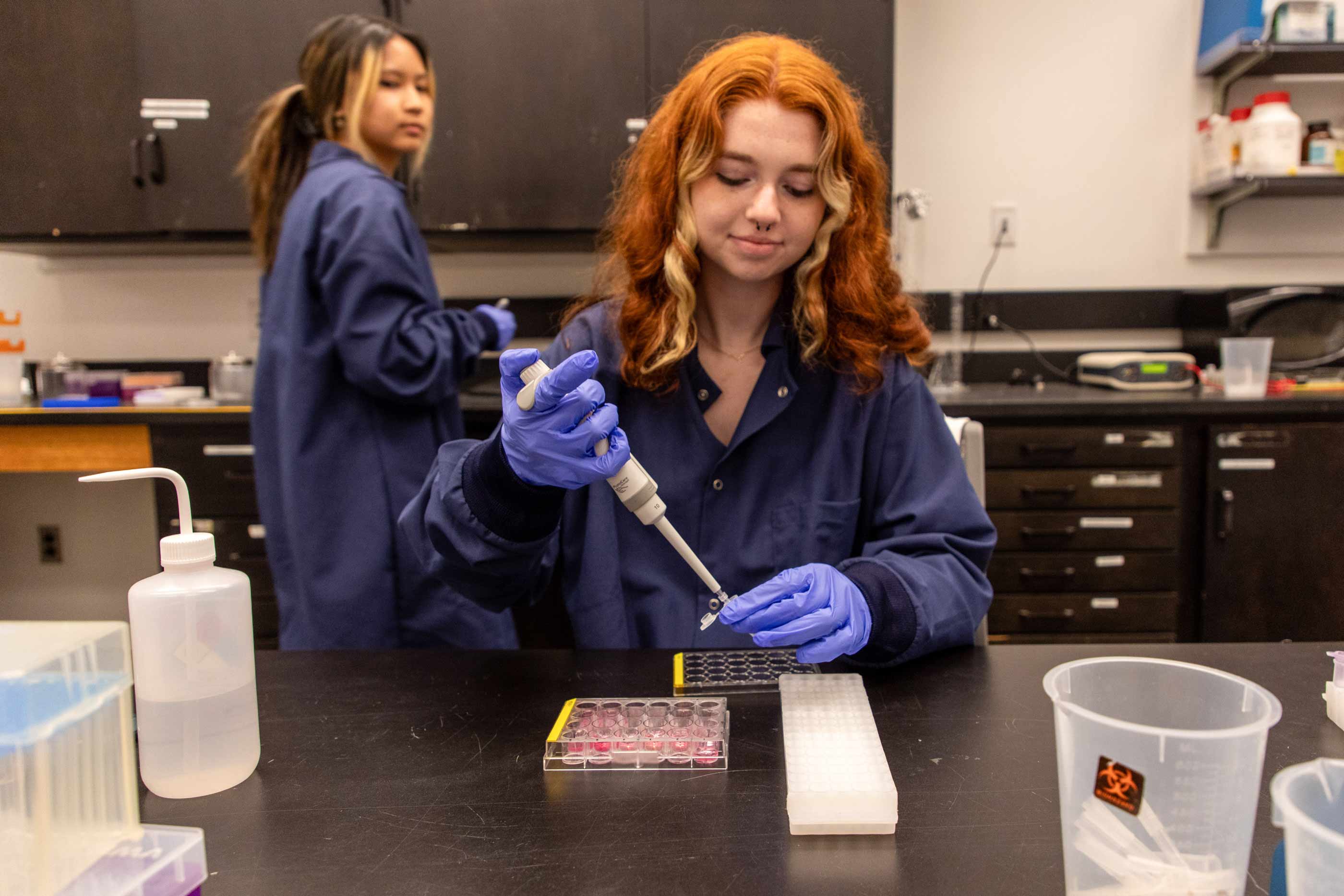
Luong said some of the research she conducted had not yielded definitive results that enabled them to make any concrete conclusions. “Ultimately, although we were not able to validate our hypothesis through this experiment, we believe that we should continue collecting more samples,” she said.
Luong, Conrad, and Cullinan will continue to work on the project with Esteban during the coming academic year, acting as team leaders for other students who will join the study.
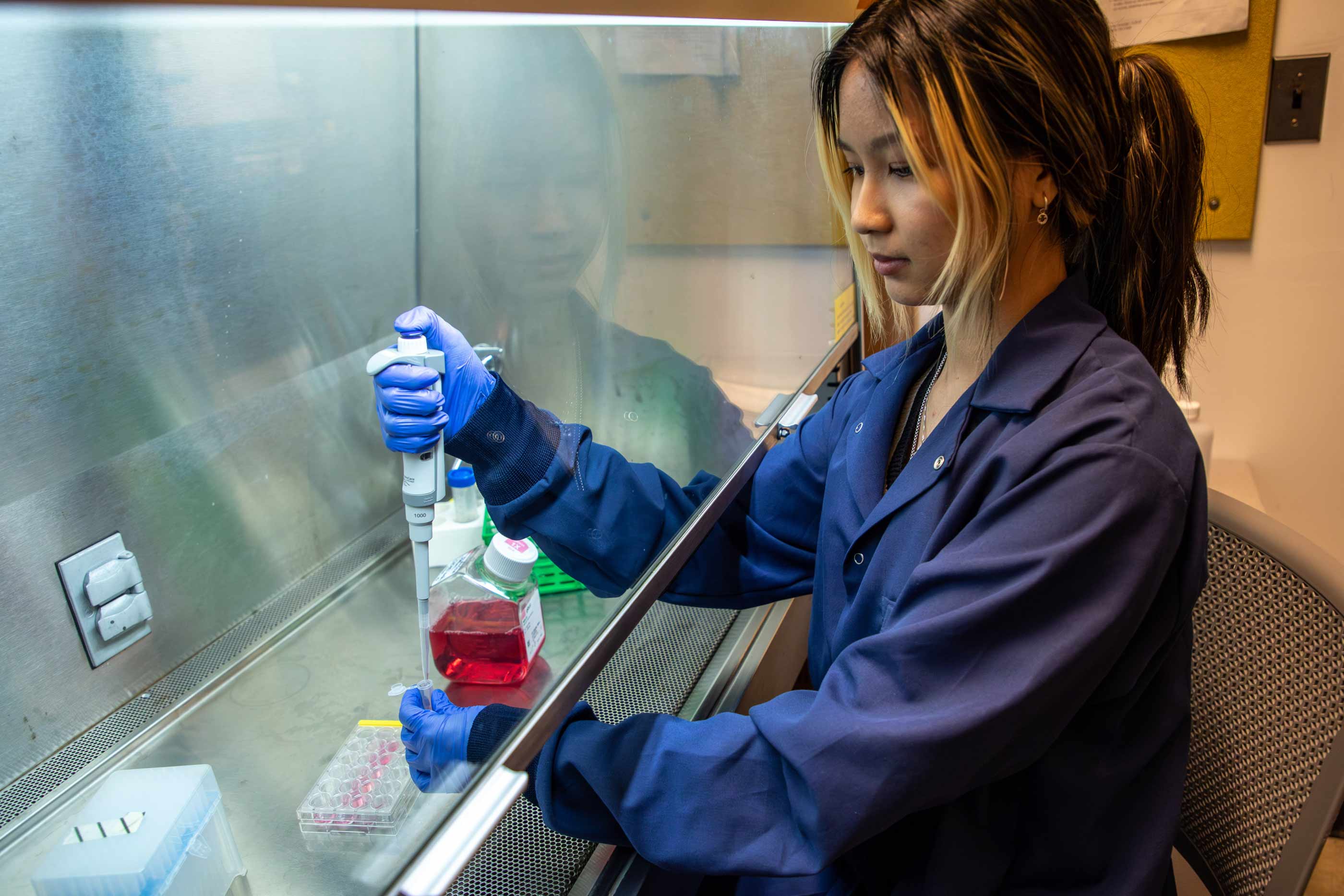
Esteban said he and his team of student researchers would soon be able to start looking for the link between autoimmune diseases such as ME/CFS and long COVID.
“My goal this summer was to show them how to run the experiments and when something goes wrong, allow them to step back and figure out what happened,” Esteban said. “I was impressed with their ability to do the work with a remarkable lack of human error.”